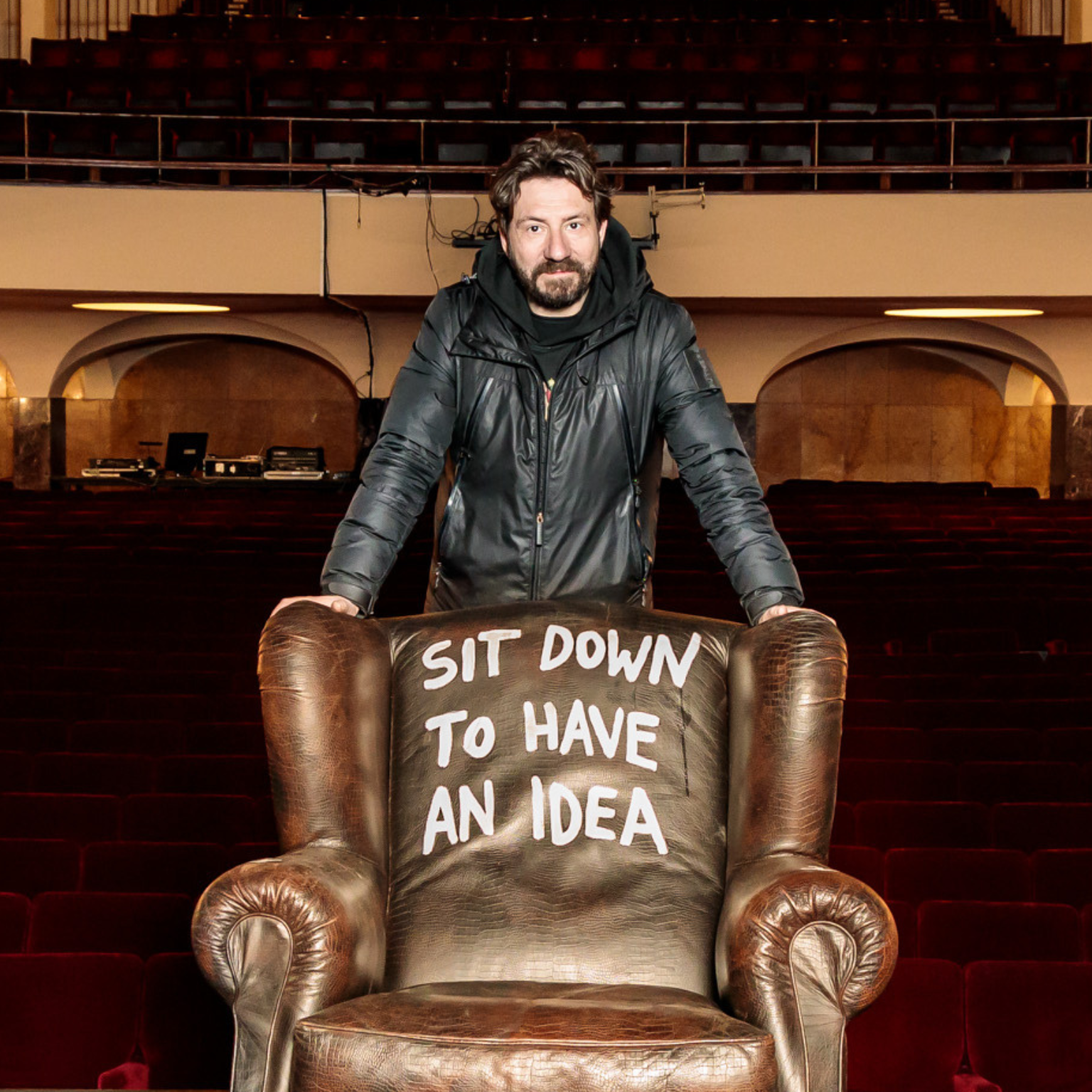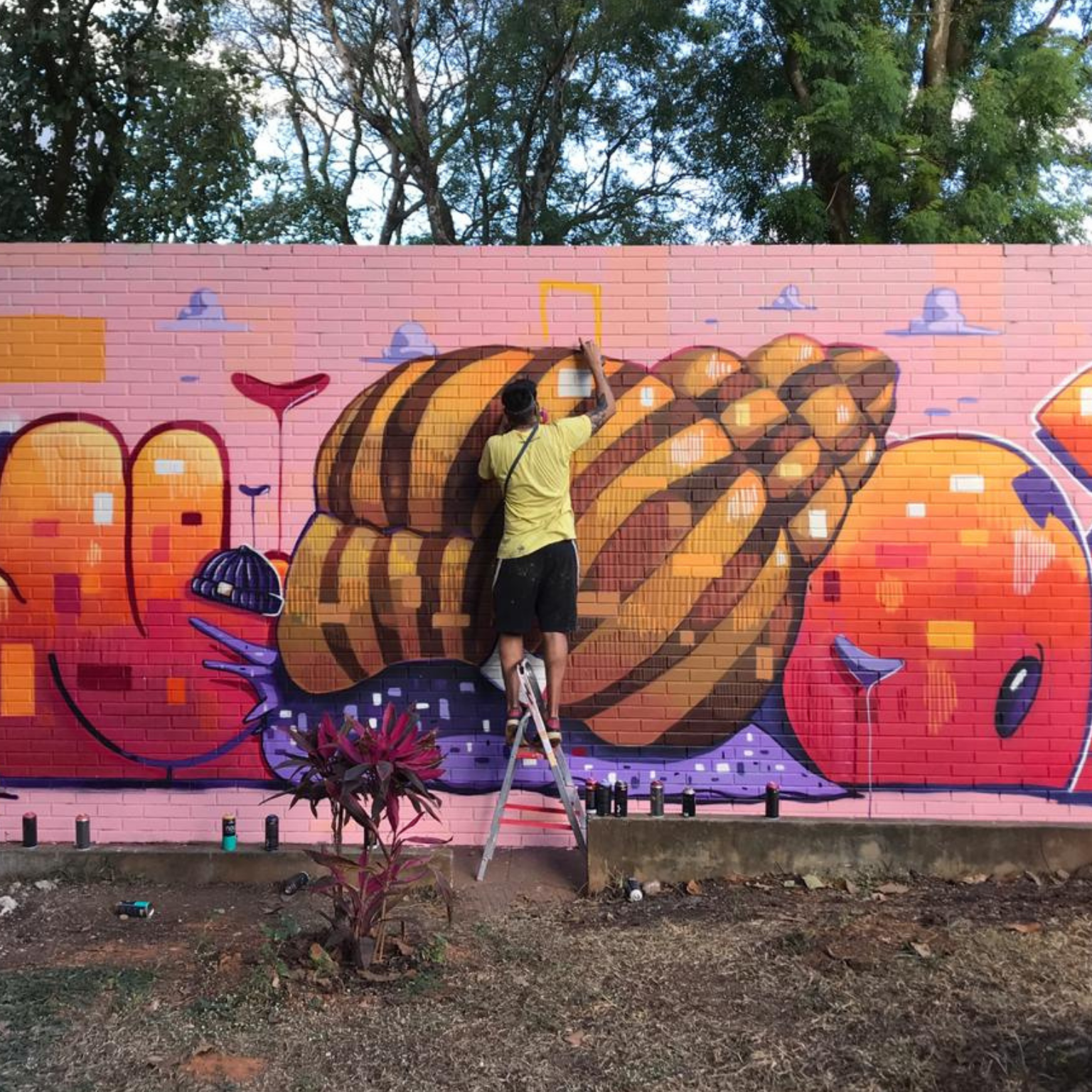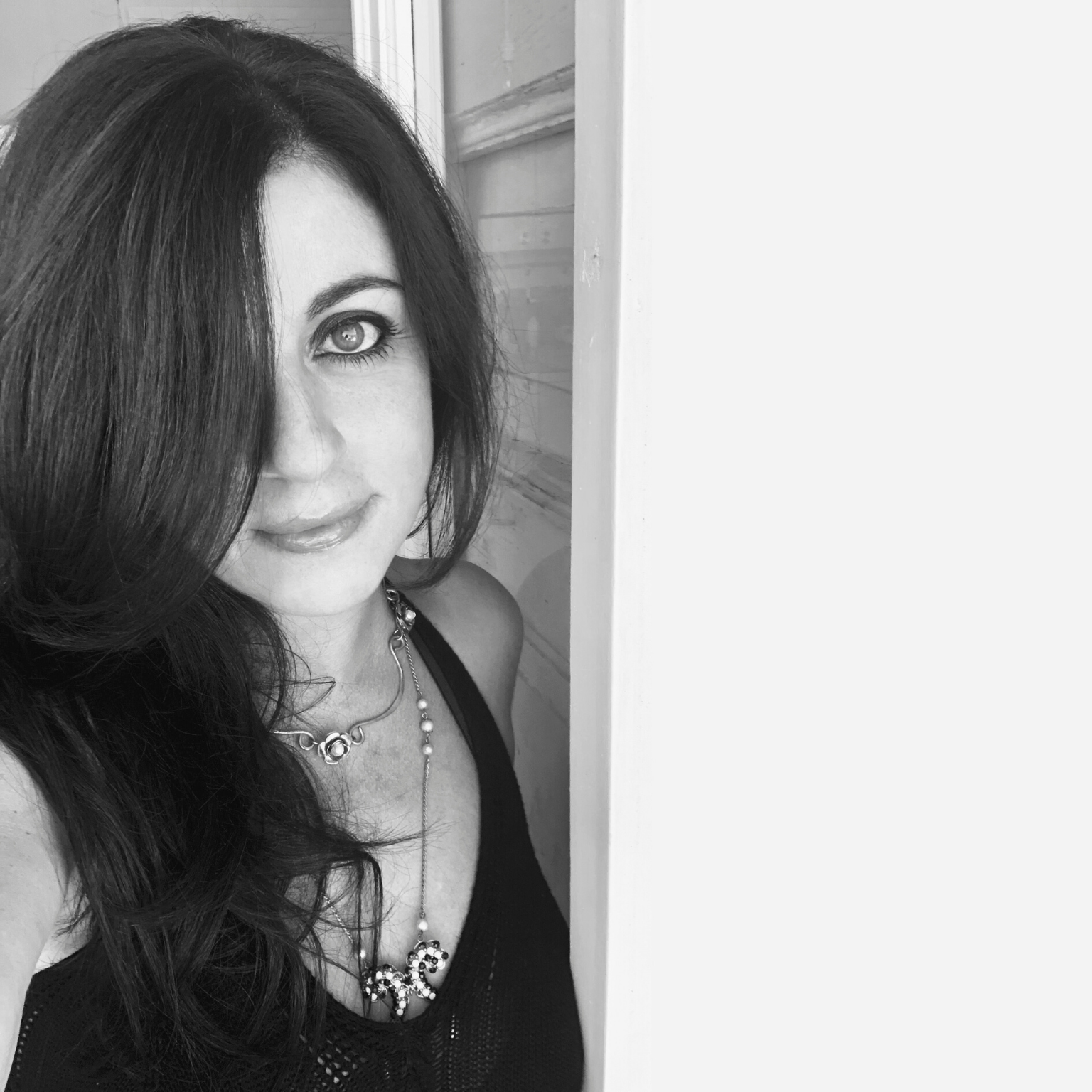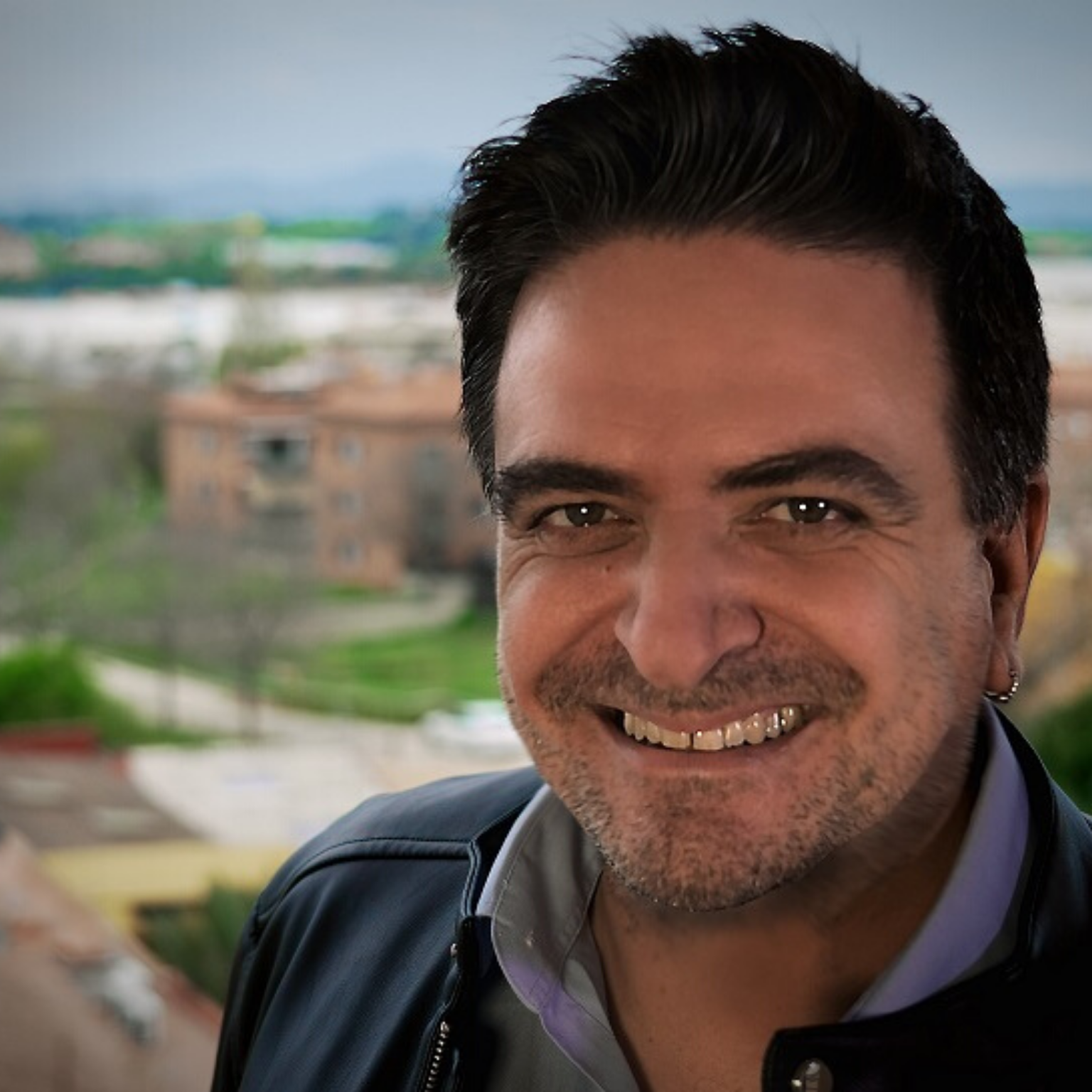Andrea Bianconi, artist from Italy. Photo © Max Donati
Tell us what you do and your beginnings.
I have many beginnings connected that represent a single great beginning, and I like to tell them as if they were a list. I like lists. At 12 I ran away from the woods, at 16 I wanted to become an airline pilot, at 20 I studied law, at 24 I left law school, at 25 I built my first cage, a monument to the disappeared, at 30 I kept, imprisoned and spied on my memories.
At 31 I was spying on my neighbor and building machines to spy on, I took a plant dissected it, and put binoculars on it; at 31 I did my first performance, being Saint Francis arriving from space with a spaceship and landing in a supermarket parking lot to give a message of peace.
At 32 I was between inside and outside, I enlisted my “Pony Express” messengers and had the first exhibition in Houston TX at Barbara Davis Gallery, at 33 I moved to New York and watched people enter and exit the subway, at 34 I built maps of arrow-birds, freedom, and constraint, at 35 I ‘knew’ Harry Houdini, he knew the escape routes very well and I studied the American army survival manual, I discovered ropes and knots, so I started accumulating objects and tying ropes: “A Charmed Life”.
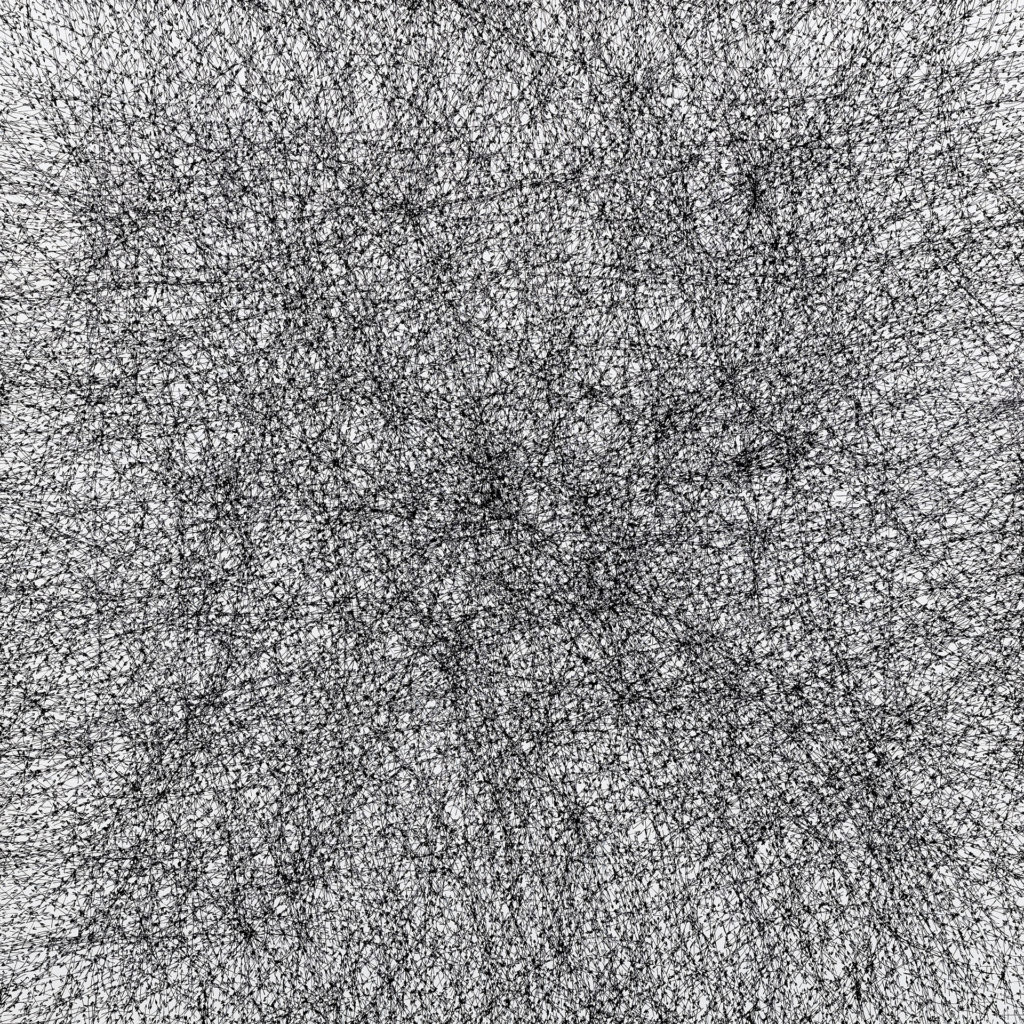
At 36 I fell in love with James Joyce and the stream of consciousness, I knotted ropes and I drew flows, at 37 I understood that a cage is a love letter, and from that moment on all my studies have a cage hanging open without a bottom, it serves to contain the thoughts that come out of my head, the cage as a prison and protection, at 38 years I investigated the relationship between people and tradition, I demonstrated with young Chinese (“The Chinese Umbrella Hat Project” (Part I), Wujiang Rd West Nanjing Rd, Shanghai, China 2010 and (Part II), Piazza San Marco, Venice 2011).
At 38 years old I punched a leaf to investigate the relationship between man and nature, I made a work for the 150th anniversary of the Unification of Italy at the Italian Embassy in Washington and I thought about the meaning of union, 38 years old I ran with a bike with a 3-meter grate attached along the streets of Peekskill (NY), I was investigating the relationship between man and landscape.
At 38 I was wondering if the NYC skylight was a cage or not, at 39 I was wearing masks one on top of the other in front of a mirror, I investigated the relationship between me myself, at 39 years old I had my back against the wall targeted by 5000 images and words, I read Calvino and ‘his mental cinema’.
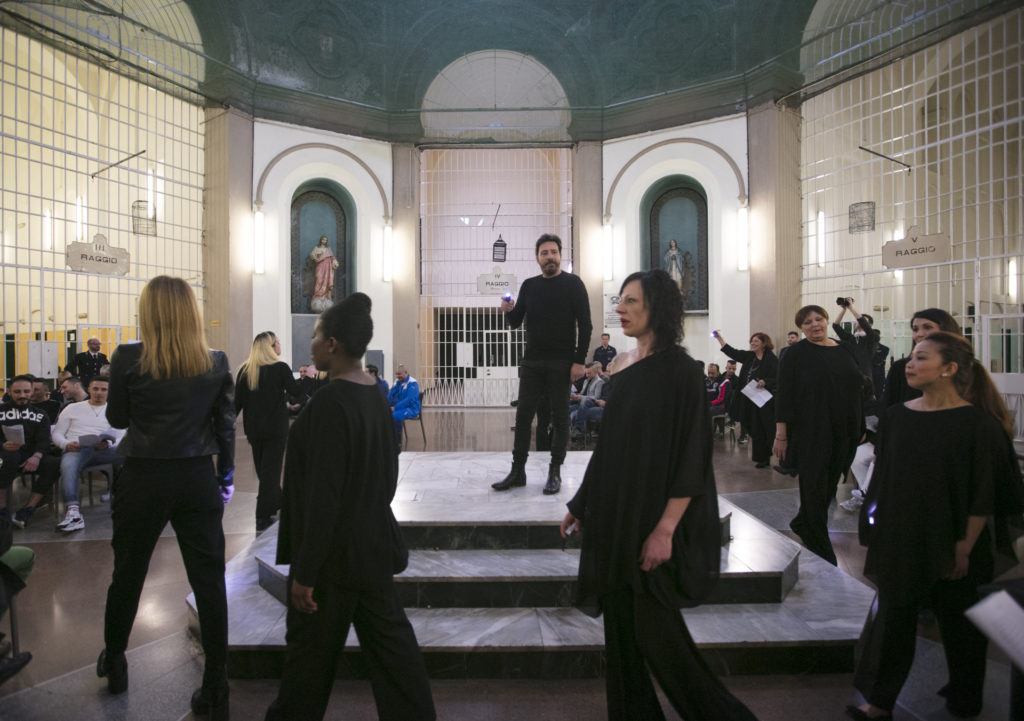
At 39 years old I drew arrows for the cover of Connection 2013 (a guide given to American prisoners for their reintegration into society), at 39 I played the colors of the traffic lights in Moscow, in Red Square, and front of the Kremlin at the 5th Moscow Biennial, at 40 I threw paper airplanes from a black box, at 40 I accumulated furniture and chairs from the inhabitants of Ghent in Belgium (MSK, Ghent) and created a huge 6-handed wall drawing with Mark Licari and Ricardo Lanzarini.
At 41 I set alarm clocks, at 41 I rang at the same time the 7 songs of my life, at 41 years old 16 refugees played the songs of their lives at the same time, at 42 years old I built two white wings, I used them to fly while remaining still in the same place, at 43 years old I remained immobile paralyzed in the midst of 200 awake in front of the bosses I was in Davos.
At 44 years old I entered the San Vittore prison and with some inmates, I was imprisoned in the cage and sang of freedom, at 45 years old, lacking ideas, I built myself the chair of ideas in the hope of continuing to have new ideas.
At 46 years old during the pandemic I imagined traveling around the world together with my daughter Ancilla Blue, at 47 years old I built a wireless telephone full of poems for the 90th anniversary of Alda Merini’s birth, at 48 years old I designed the exercise manual one’s stupidity, at 49 years old I ask myself what there is between soul and body, between rational and irrational, between fiction and reality. The idea of both physical and mental travel is rooted in my work.
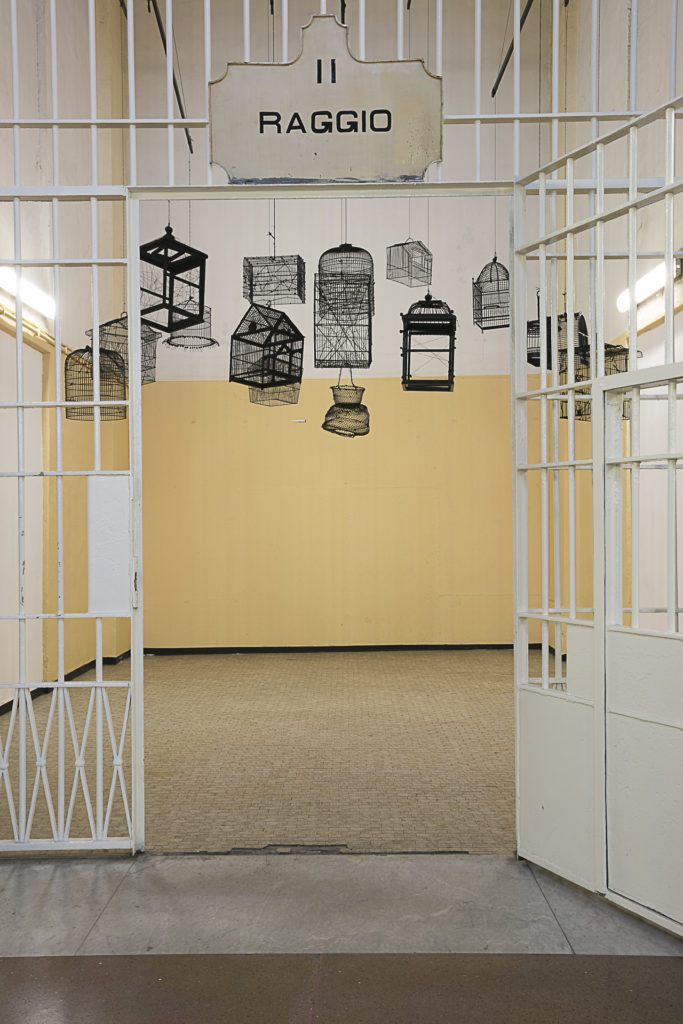
What does your work aim to say?
In answering you I would start from the arrow, a constant element in my work. The arrow is the direction, but the arrow is also the human being. If we close our legs and open our arms we are an arrow, we are a tension upwards, towards something. My work is linked to life and the human being and the observation and deepening of the human dimension.
Through the arrow I always try to investigate and develop relationships between people, things, and cultures, I investigate relationships. In 2018 I was invited to Davos (Switzerland) by Future of Humanity at the 48th World Economic Forum to present “Voice To Nature”, a performance exposé on ecocide, to heads of state from all over the world. I showed the urgency of acting now and not later for the well-being of the planet. To raise awareness about climate change and responsibilities.
During the performance, I was immobile and paralyzed by the sound of two hundred alarm clocks ringing at the same time.
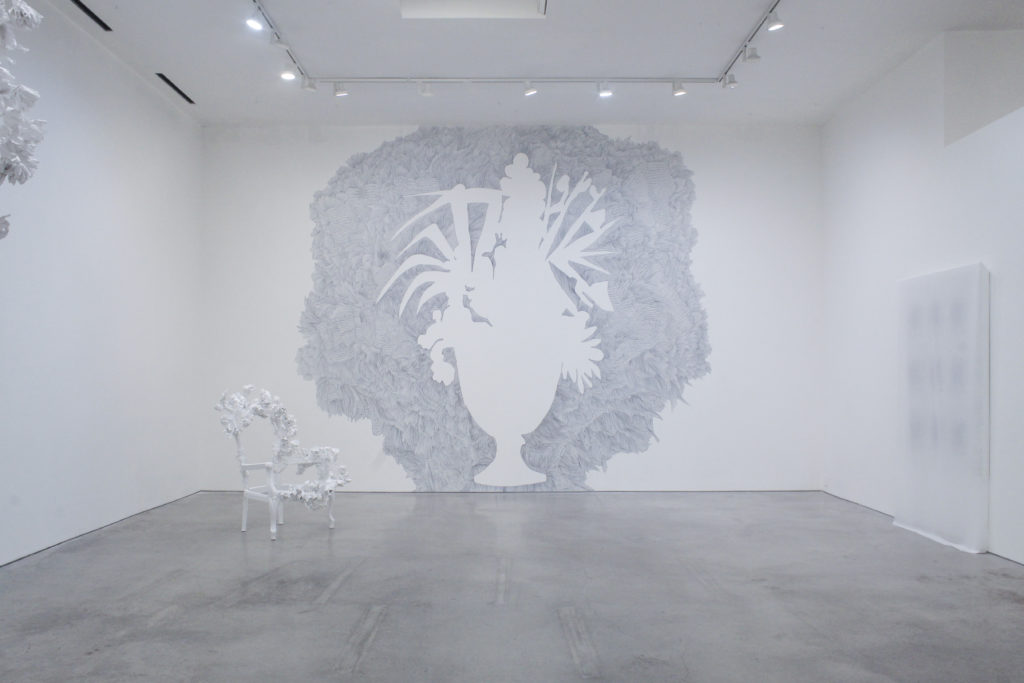
On 3 April 2019, I did the performance “How To Build A Direction” with some inmates in the San Vittore prison in Milan with the production of Casa Testori, it was the first time that the artistic form of performance entered San Vittore. This performance was a liberating rite, it represented the relationship between a condition and the path of a possible path.
Art always has an openness towards the future even if it conveys dramatic messages. I always try to look at the good and not the bad. For me, art is an act of courage that stimulates more courage in people. I want to open points of view, I want to reach everyone by always transmitting lightness and reflection. Like, for example, the armchair of ideas, armchairs that started in my studio and have invaded squares, theatres, stations, hospitals, and streets, from the top of a mountain to the sea of Tropea, from a medieval village to having recently become a monument that lives thanks to the people who will sit there.
Where do you find inspiration for your art?
The other is fundamental, it is vital. Others understood it as another me, another person, another place, another culture, another person, another thought, another book, another point of view, another object, another story. I look at people, as well as objects, I look at them obsessively. For example, the idea for the “Sit Down To Have An Idea” armchair came to me in the studio while desperately searching for an idea.
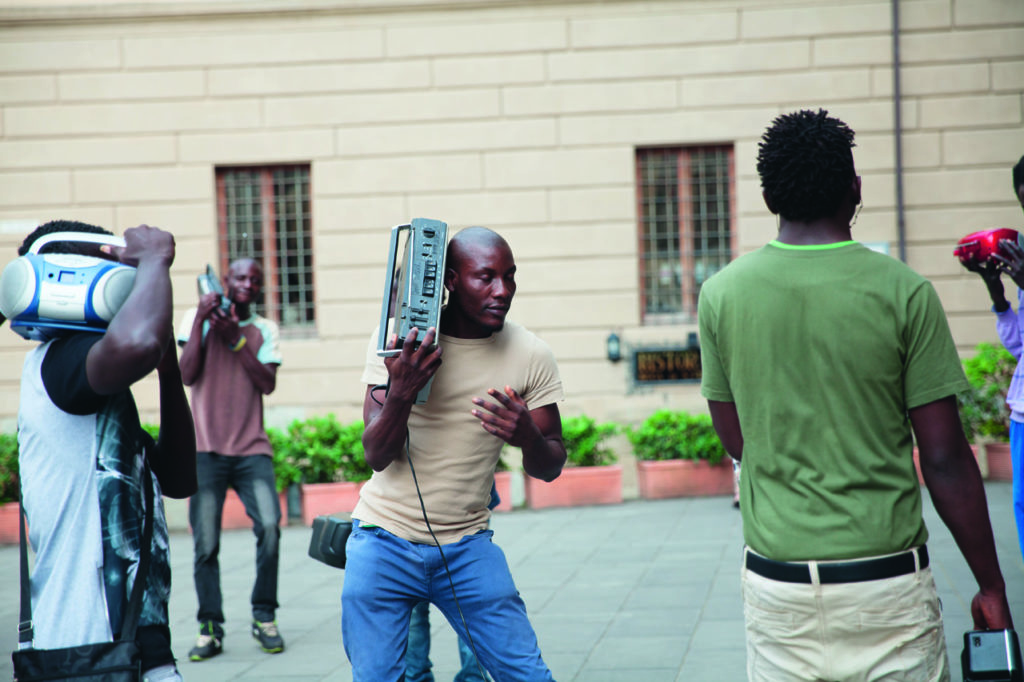
I remember walking obsessively in the studio observing every object in the hope of an idea, in a corner there was the usual green armchair, suddenly I started to see it differently, I took a white color and wrote “Sit Down To Have An Idea”, from that moment I saw the armchair, friend, accomplice, traveling companion, magical.
At that moment the armchair of ideas was born. In the performance “You Always Go Down Alone” I remember that I was sitting in a bar on 2nd Avenue in NYC listening to the dialogue between two people, suddenly a woman asks a man: “Why are you so sad?”, and the man replies: “You always go down alone”.
I immediately imagined a man shooting 100 arrows into the sky with a bow with the image of his face in place of the tip. These arrows inexorably fell to the ground and crashed. My inspiration is the other.
Could you give us some insight into your creative process?
My artist book “Romance” (2013) was published by Cura.books (MoMA Library Collection) tell my creative process very well. It is a booklet of 5000 signs, drawings, and words that retrace a part of my life. Each word, sign, and drawing is linked to the following, and the previous one, is an infinite parental chain, for example: town, own, now, know, knowledge, edge, where, there, here, he, it, object…
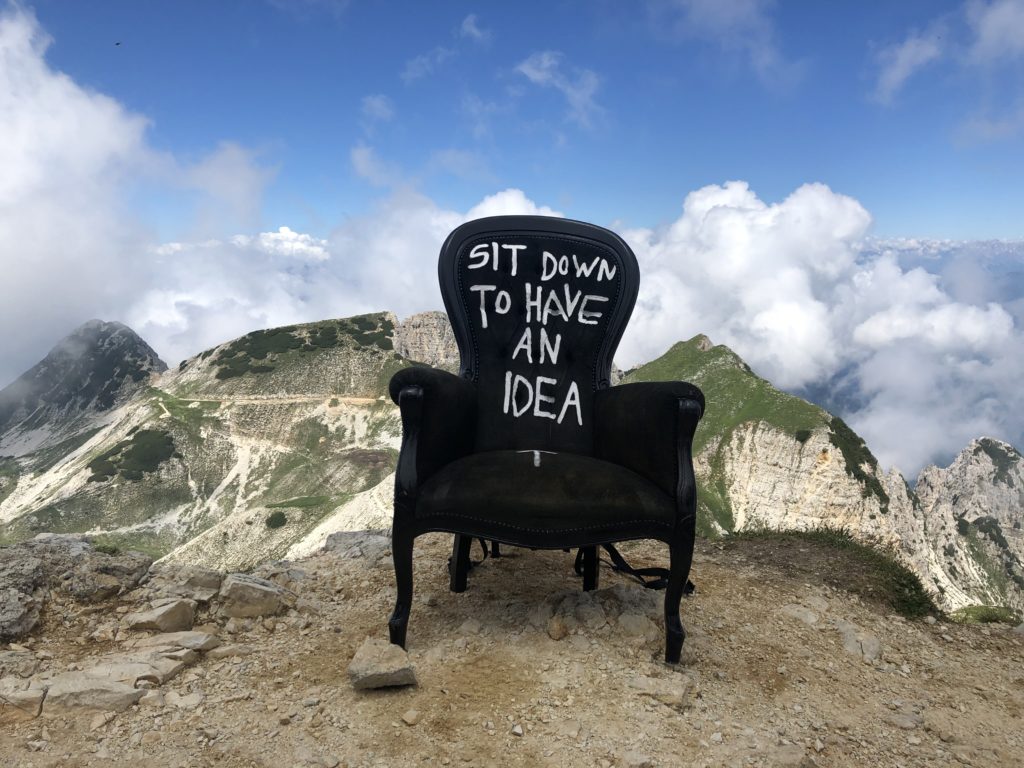
When drawing I feel like a seeker of connections between signs, things, words, spaces, actions, and sounds. I live with the unexpected. I collect things that perhaps I will need one day, I search and research, I find and rediscover, I collect, I catalog, I dissect and I relate. My studies are a bit caves, caves, tunnels, many spaces in a space, many rooms in a room, many sounds in one sound, many directions in one direction.
For example in the performance “Too Much” (2015, George R. Brown Convention Center, Houston TX) I combined the 7 songs of my life into a single song, I wanted to combine the 7 important moments of my life in a single moment, and I combined the memory of the first kiss, of my father’s death, of marriage… same thing I did in the performance “Babele” (Arezzo, 2015) on the occasion of Expo 2015, a performance on the lack of communication where 18 refugees, carrying on their shoulders a stereo with music different from the other, they danced in the sign of union.
The arrow summarizes my creative process. I draw a lot, the drawing contains wings, Dra-Wing. When I have to create a large wall drawing, I don’t prepare a draft or a project, I start by letting myself be carried away by those Wings that the word Drawing contains. The arrow itself also has two wings.
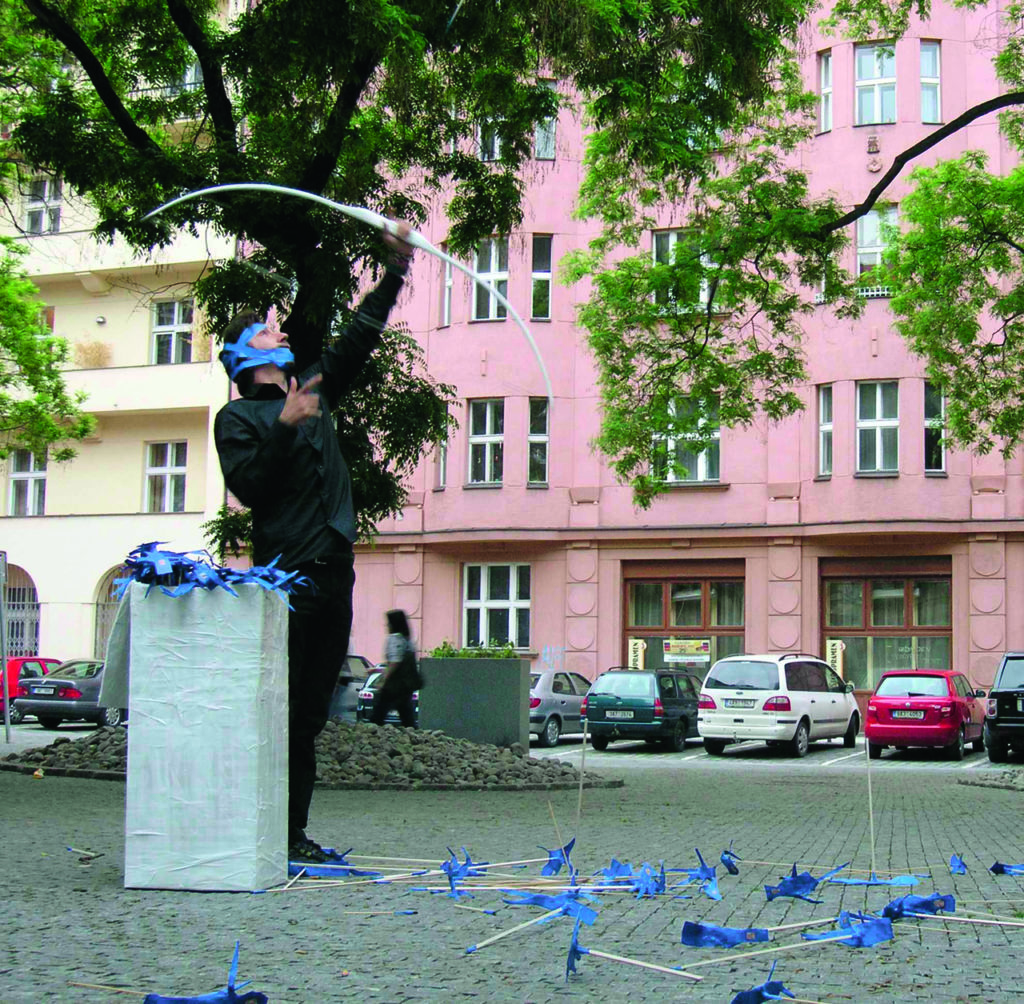
What are your future projects?
I have inaugurated “Invisible Dance”, my 15th solo show at Barbara Davis Gallery in Houston TX, and from tomorrow a new book, a new exhibition, and a new performance.
Interview by Fabio Pariante, X • Instagram • Website
